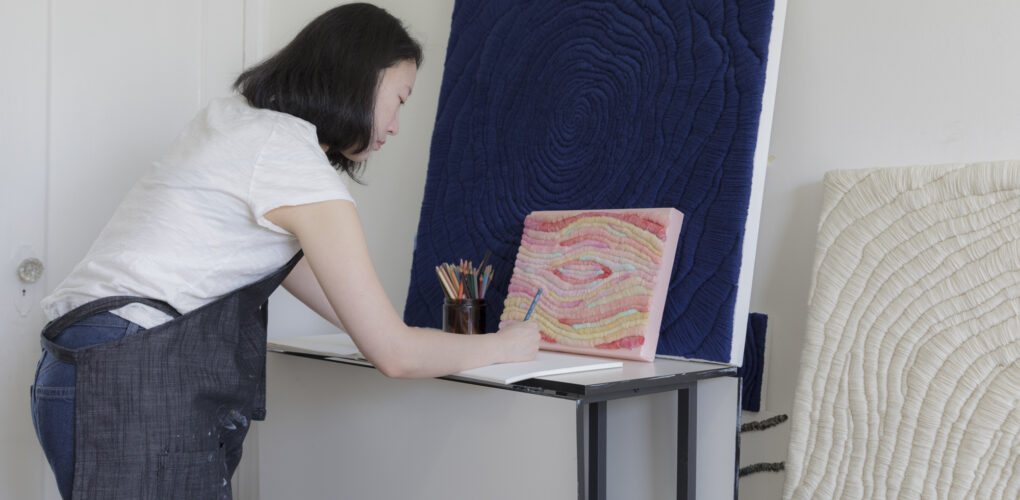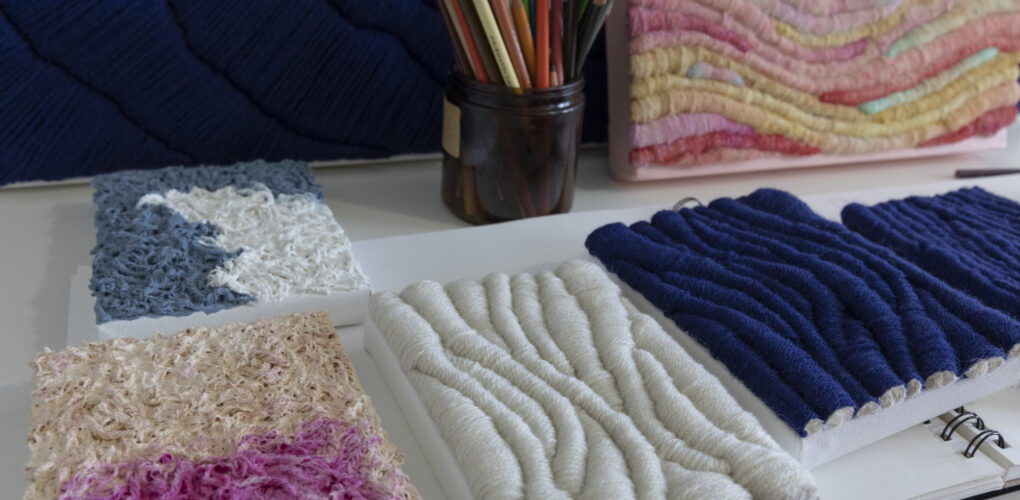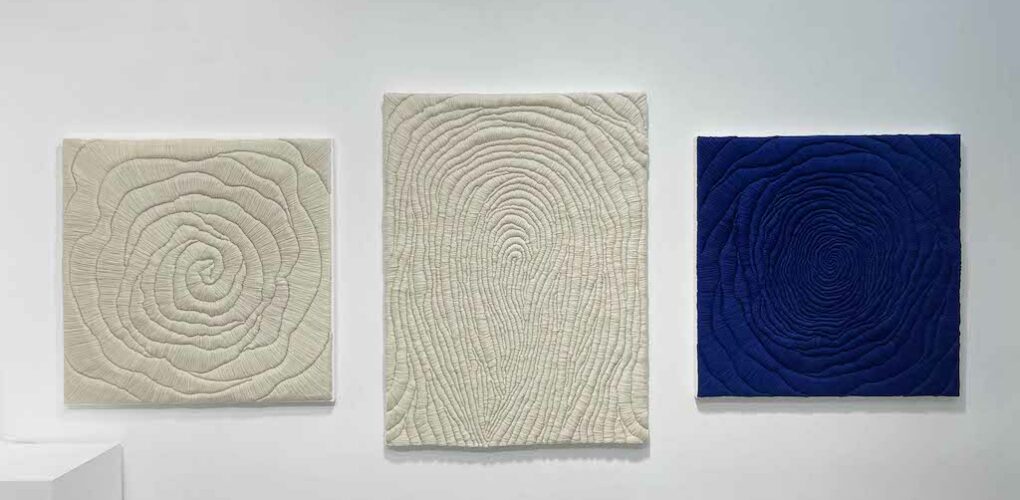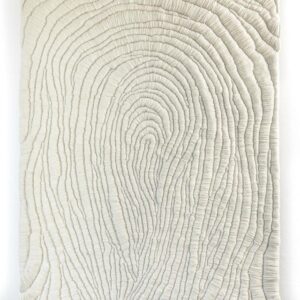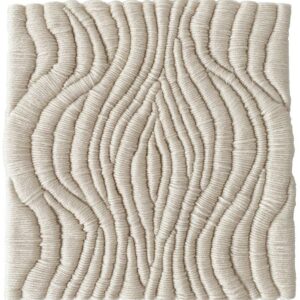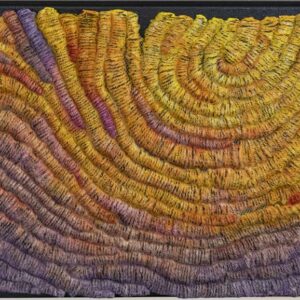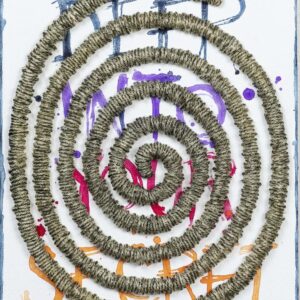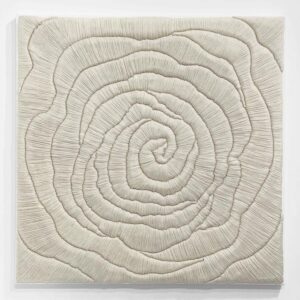One to Watch
Ami Park on Going With the Flow
It all starts with a vibration. Then, there’s a ripple effect. For textile artist Ami Park, vibrations and their ripple effects are at the root of everything, yielding an interconnected web of energy between thoughts, emotions, relationships, and nature. In Ami’s artworks, waves of thread and fabric tend to emanate from a central point, visually representing this natural movement. Ami’s lovingly woven textiles are made in meditative monochrome or dizzying swirls of color—in either case, their fluid and concentric compositions invite the viewer to lose themselves in the flow.
Ami Park holds a BFA from Parsons School of Design in New York, where she continues to live and work. She has exhibited her work internationally, with recent shows at La Galleria Pall Mall in London, Gallerie Dièse in Paris, and Dodomu Gallery in New York.
Tell us about who you are and what you do. What’s your background?
I’m Ami, born and raised in Seoul, Korea. I moved to NYC in 2011 to go to Parsons School of Design. My background is in craft art and fashion design. Now I live and work in Queens, New York. I am a visual artist currently using fiber materials and painting.
What does your work aim to say? What are the major themes you pursue in your work?
My work is about vibrations as I believe thoughts, emotions, and objects hold different vibrations and are all interconnected. Being genuinely interested in the universe as the source of all things, I approach my work through science and spirituality, investigating the measurable and immeasurable. And my work explores the vibrations between the human mind and things. Through creating repeating textures and colors, I delve into themes of self-awareness and emotional vulnerability to find my authentic self and expand my source energy.
Are there any specific spiritual practices or traditions that influence your work?
I try to meditate twice a day—right after waking up and before bed. And I write short notes and journal my feelings and thoughts whenever I feel like I need to. All this practice is to stay in touch with my inner self and not be distracted by negative influences in daily life.
Can you walk us through your process for creating work from beginning to end?
It begins with my feeling and imagination of motions. I feel vibrations when I think of a subject I want to speak through my work. And I move on to sketch the invisible movement in my mind. And then, I start my hand embroidery work based on the sketches. Sometimes I skip the drawing part, but I try to grasp the vibrations during the work. When I do colored work, I choose the color palette I want to use before starting the project. It can be spontaneous or inspired by other objects or artwork.
Do you prefer to work with music or in silence?
I like listening to music while working. It gives me flow. I mostly listen to classical piano and symphony by Seong Jin Cho, jazz by Bill Evans, Dave Brubeck and Paul Desmond, and ’80s soul. But it really depends on my mood as I love music in general.
Who are your biggest influences, and why?
First and foremost, my mom is my most significant influence and supporter. I got my artistic interest and passion from her side. She loves music, art, fashion, and food, which I naturally absorbed growing up. And there is my [former] professor from Parsons during my senior year. She encouraged me to step out of my comfort zone when I doubted myself when transitioning my career to art. She’s my mentor, friend, and spiritual tribe.
How does your work comment on current social and political issues?
My work doesn’t debate specific social and political topics directly, but it instead talks about personal interpretation of them based on my experience and perspective living my life. For example, I realized every action we take is to be noticed and recognized in the end, and we all want to be connected deeply with one another regardless of personality, race, nationality, gender, sex, and occupation. That was my initial thought in creating We All Have a Thirst For Connection (2021).
What are some of your favorite experiences as an artist?
It’s always interesting to hear other people’s impressions of my work because a lot of the time, they are so new that I’ve never thought [of them] before.
How do you hope viewers respond to your works? What do you want them to feel?
I want them to feel whatever they feel. I believe it is what the viewers are meant to experience at the time and place.
Love reading about all things art? You can have articles from Canvas, curated collections, and stories about emerging artists delivered straight to your inbox. Sign up for the Saatchi Art Newsletter.
